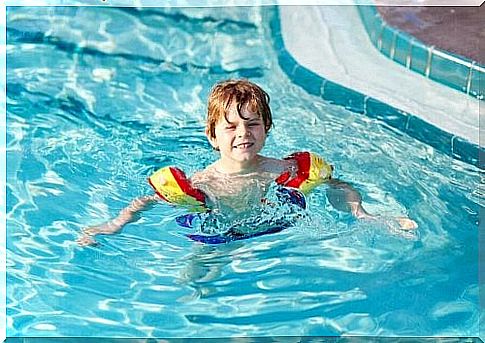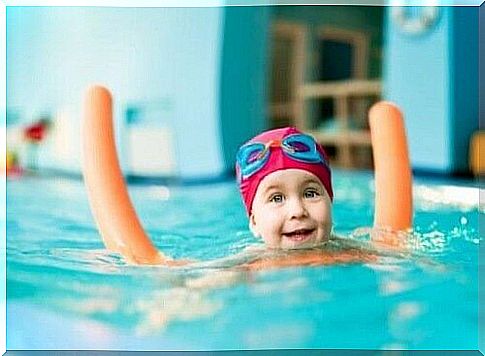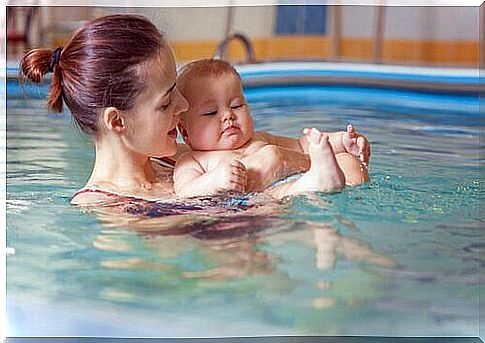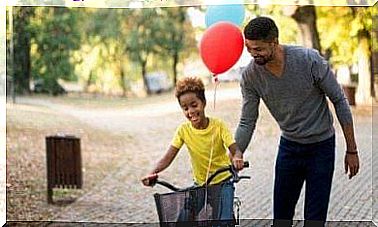7 Tips For Teaching Kids To Swim – Parenthood

It is vitally important to teach children to swim. While this is also fun, it will prepare them for any emergency in the water. In addition, this activity has great benefits for the physical and intellectual development of children.
7 tips for learning to swim from an early age
For many children it is natural to enter the water, while for others it is difficult, often due to fear. With the help of a few simple tips, you can teach your child to be an excellent swimmer.
1. Adapt to the water to remove fear
In order for the child to feel confident, you can install support material, such as armbands or buoys, on which he can hang on with the help of his parents. This will help him get used to a totally different environment from the earth.
2. Start where the child has foot
You must make sure that the child starts in an area where he has a foot. This will give him security, since the main difficulty for children in learning to swim is the fear of sinking.
If he starts crying and doesn’t want to go in the pool, don’t force him; you can encourage it to come in if you are in it. However, if the child continues to cry, do not insist until it is more convenient.

3. Learn to bubble in the bathtub
To teach children to swim, you can start to practice breathing in the tub. Have him inhale air and then expel it through his mouth into the water to make bubbles. Although it is a fun game for the little one, in reality it is a fundamental exercise in learning to swim.
4. The moment to put your head under water
After getting used to blowing bubbles, suggest to the child to put his head under water when he blows the bubbles. He will be surprised the first time, but by noticing the bubbles and seeing that nothing is happening, the fear will go away. If he’s afraid of the bubbles coming out his nose, give him a try by looking to the side.
5. Learn to move your legs
For this you need to gently hold him by the stomach and help him stay horizontal while he moves his legs. At first, children tend to sink their bodies and legs. When you think it’s time, you can take your hand off the tummy without the little one noticing.
“If the child is crying and does not want to go into the pool, do not insist until the moment is more opportune”
6. Breathing and legs at the same time
Now is the time to coordinate the two exercises: leg movement and bubble blowing in the water. You can hold him by the underarms and ask him to do both exercises at the same time.
7. Try alone
Once he has mastered both exercises in a synchronized manner, you can let go for a few seconds. In this way, the child can realize that it is easy to do it alone.
Nevertheless, be patient and steadfast in this learning, because it will not learn to swim overnight.
The benefits of learning to swim from an early age
The benefits of teaching children to swim are manifold. Of course, the main thing is that it can save his life in the face of a dangerous situation.
On the other hand, swimming helps to exercise, to develop and strengthen almost every muscle in the body, to increase lung capacity and to stimulate blood circulation.
In addition, it promotes coordination, motor skills as well as the reflexes of the body. Without a doubt, swimming helps the child to grow and develop healthily.
Some precautions when your child is learning to swim
Once the child knows how to swim, you need to teach them some precautions to keep in mind. For example, teach him that he should always swim under the supervision of a responsible adult.
In addition, he should not swim in storms or next to boats, water skis or boats. Diving or swimming alone is also not recommended.
Swimming for babies: a real workout
It is a pool activity between the baby and his mother or father, with the help of a teacher. The goal is to stimulate the baby’s aquatic development through play. In general, this is recommended from the baby’s four months, because his immune system is already developed.

The courses baby swim last between 30 and 40 minutes. It will depend on the baby’s resistance and reflexes. With the help of parents and the teacher, some teaching materials such as boards, balls or other support material are used.
Thanks to this method, the baby manages to acquire aquatic motor skills to learn to swim afterwards. This is recommended from the age of 4, when the musculoskeletal system is sufficiently developed.
Finally, teaching children to swim is an unforgettable experience. In addition to the immense benefits for the child, this task also helps to strengthen family bonds.









